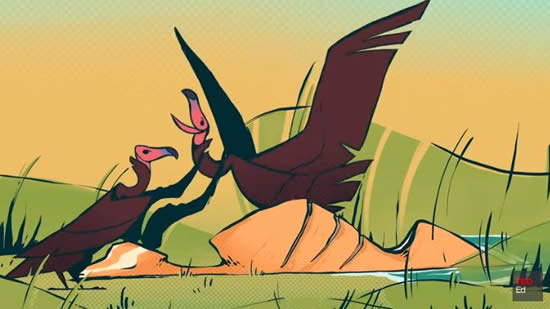Many schools across country are closed for two weeks–or longer–due to the COVID-19 outbreak, and a great number of districts have moved online to help students stay current with their learning. If you’re a teacher communicating with your students while school is closed, or if you’re a parent looking for an engaging educational resource, TED-Ed Lessons might be just the thing for you.
Claws and nails, vultures, third eyelids, Rasputin–these topics are sure to grab students’ attention.
Related content: 5 TED-Ed Lessons to introduce students to robotics
The TED-Ed platform is especially cool because educators can build lessons around any TED-Ed Original, TED Talk, or YouTube video. Once you find the video you want to use, you can use the TED-Ed Lessons editor to add questions, discussion prompts, and additional resources.
1. Why do people fear the wrong things?
A new drug reduces the risk of heart attacks by 40 percent. Shark attacks are up by a factor of two. Drinking a liter of soda per day doubles your chance of developing cancer. These are all examples of a common way risk is presented in news articles, and can often be misleading. So how can we better evaluate risk? Gerd Gigerenzer explores the difference between relative and absolute risk.
2. Vultures: The acid-puking, plague-busting heroes of the ecosystem
In the African grasslands, a gazelle suffering from tuberculosis takes its last breath. The animal’s corpse threatens to infect the water, but for the vulture, this isn’t a problem: it’s a feast. With a stomach of steel that can digest diseased meat and waste, vultures are essential to removing dangerous pathogens from ecosystems. Kenny Coogan explores the importance of the desert’s cleanup crew.
3. How rap saves lives
Raegan Sealy presents a daring account of trauma and healing as she waxes poetic on the power of rap. Through lyrical music, she confronts privilege, violence, race and the discomfort of borrowing from a culture that is not her own, while discovering a community that is.
4. The mysterious life and death of Rasputin
On a night in 1916, Russian aristocrats set a plot of assassination into motion. If all went as planned, a man would be dead by morning, though others had already tried and failed. The monarchy was on the brink of collapse, and they believed this man was the single cause of it all. Who was he, and why was he to blame for the fate of an empire? Eden Girma explores the life of the notorious Rasputin.
5. Why do humans have a third eyelid?
You know that little pink thing nestled in the corner of your eye? It’s actually the remnant of a third eyelid. In humans, it’s vestigial, meaning it no longer serves its original purpose. There are several other vestigial structures in the human body, quietly riding along from one of our ancestor species to the next. But why have they stuck around for so long? Dorsa Amir investigates.
6. Claws vs. nails
Consider the claw. Frequently found on animals around the world, it’s one of nature’s most versatile tools. Bears use claws for digging as well as defense. An eagle’s needle-like talons can pierce the skulls of their prey. Even the ancestors of primates used to wield these impressive appendages, until their claws evolved into nails. So what caused this adaptation? Matthew Borths investigates.
7. Are we living in a simulation?
All life on Earth— living and inanimate, microscopic and cosmic— is governed by mathematical laws with apparently arbitrary constants. And this opens up a question: If the universe is completely governed by these laws, couldn’t a powerful enough computer simulate it exactly? Could our reality actually be a detailed simulation set in place by a more advanced civilization? Zohreh Davoudi investigates.
- 4 ways to support work-based learning - April 23, 2024
- Prioritizing inclusivity in game-based learning - April 22, 2024
- Friday 5: Universal Design for Learning - April 19, 2024


